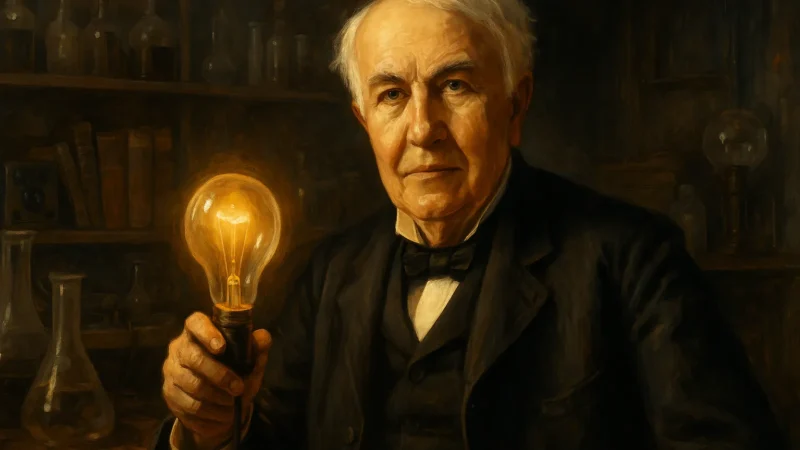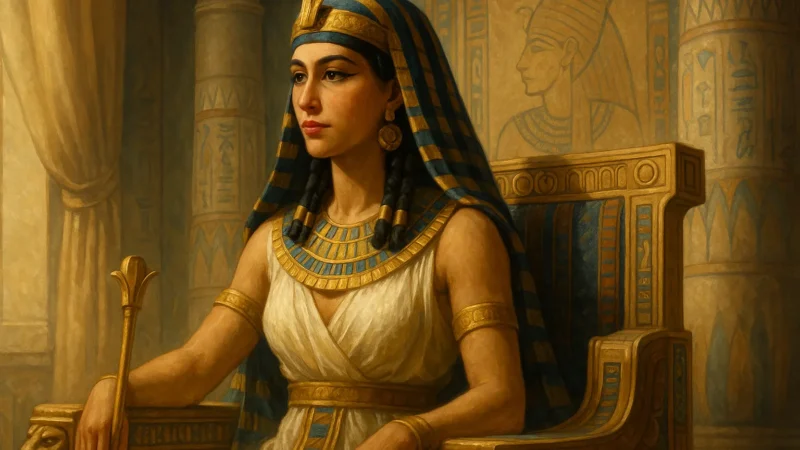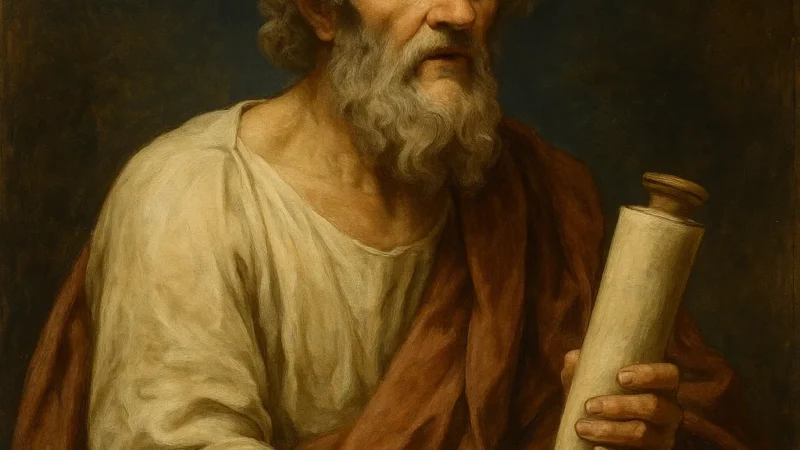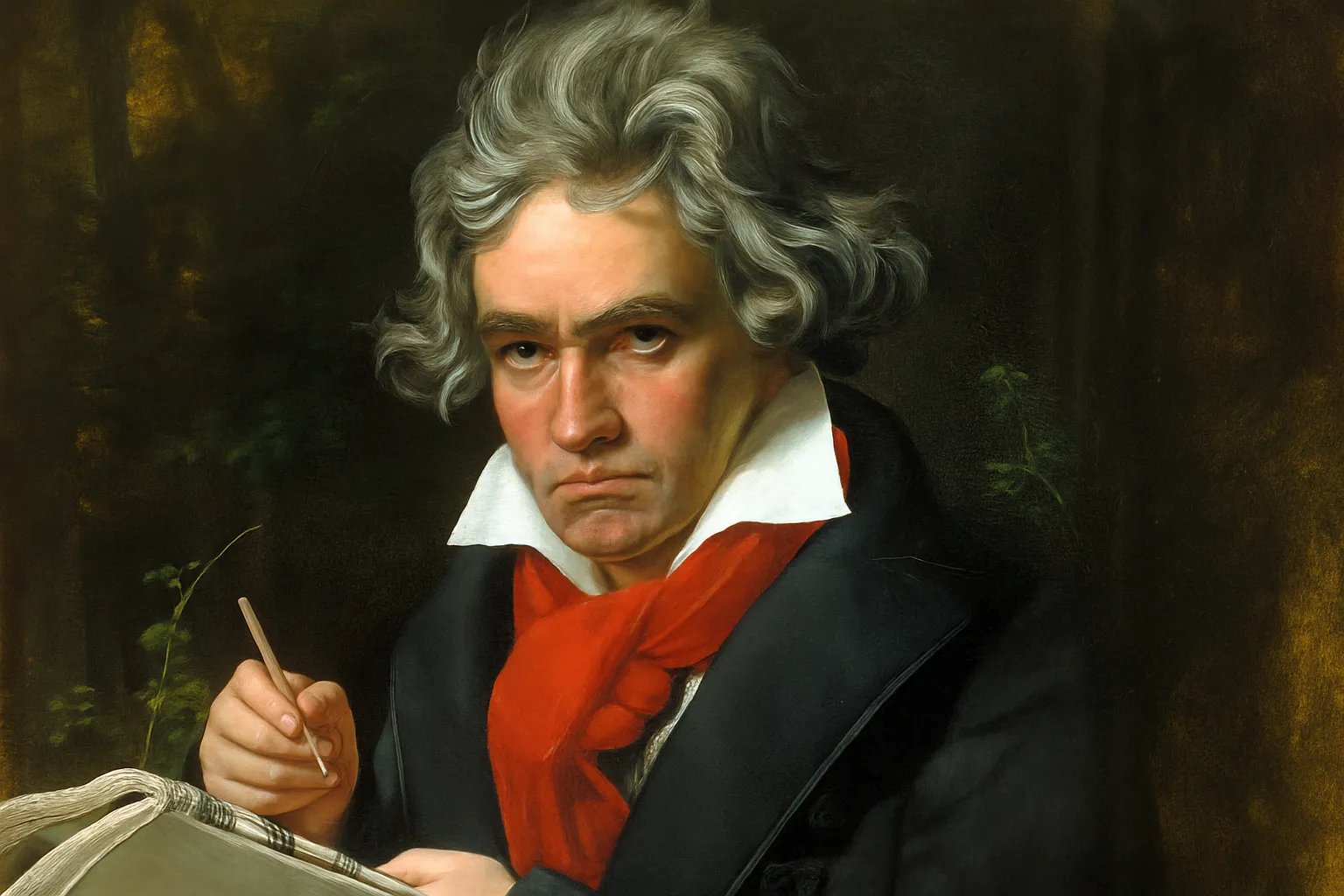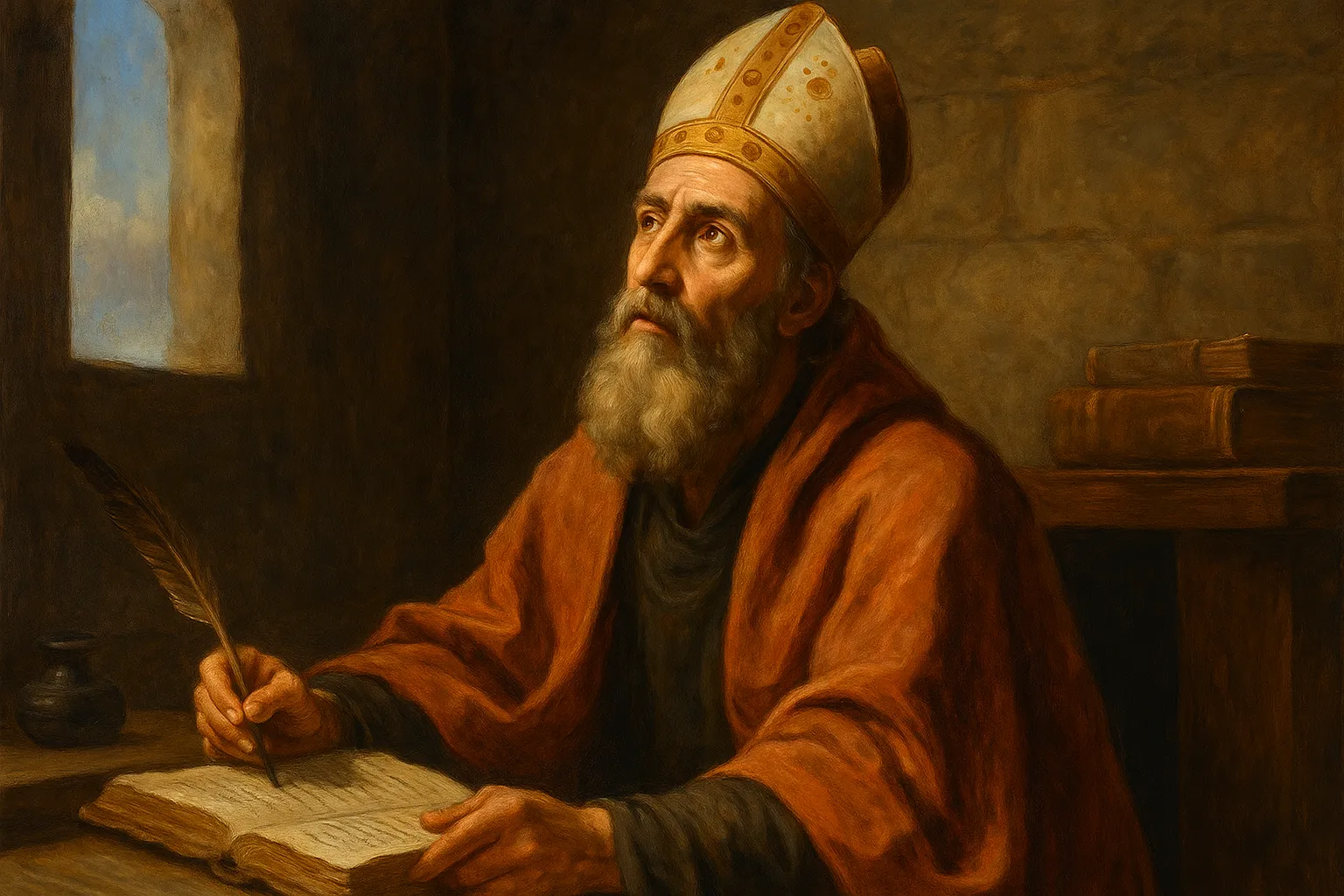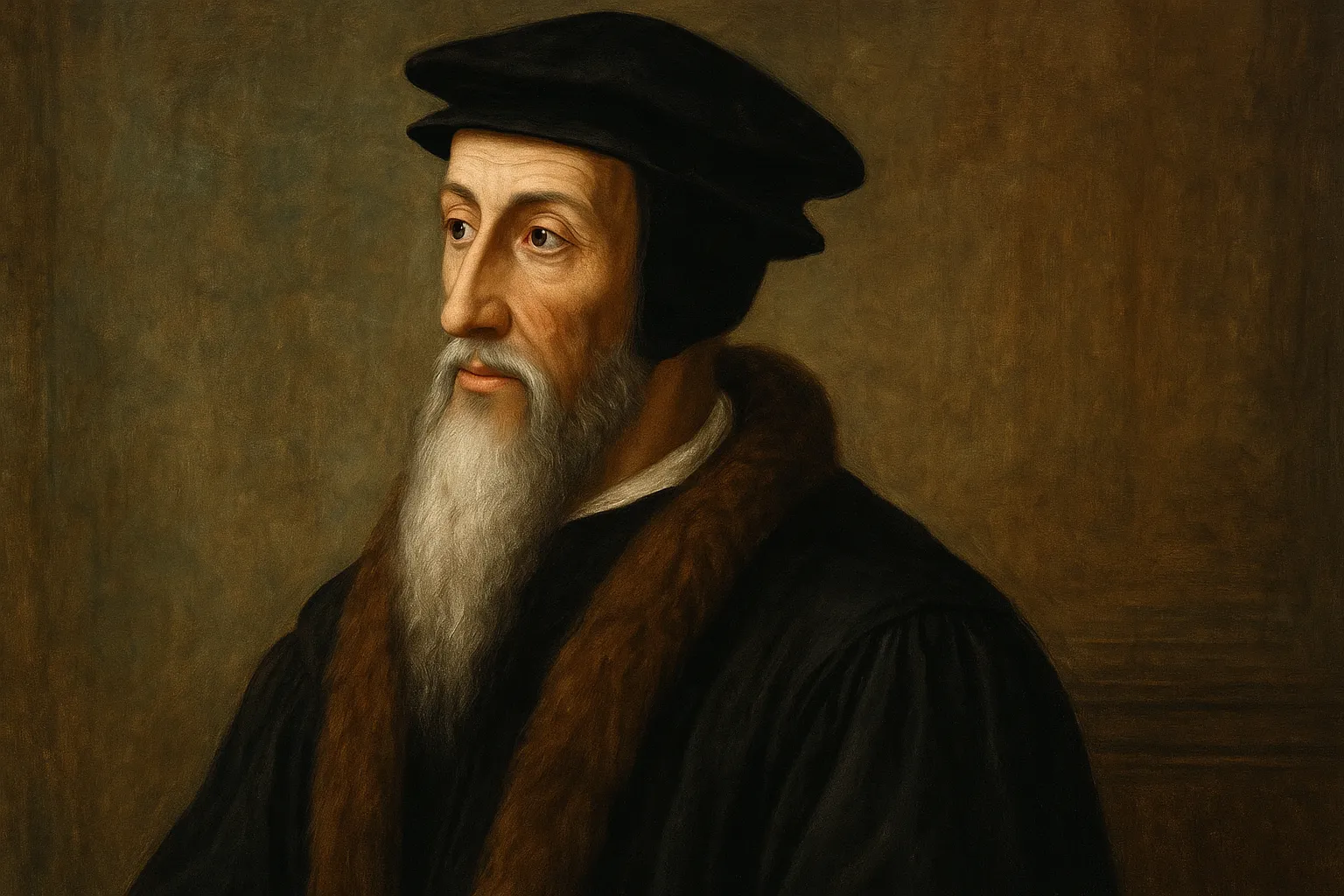Biography of Peter I of Russia: the Tsar who opened the Empire to the West
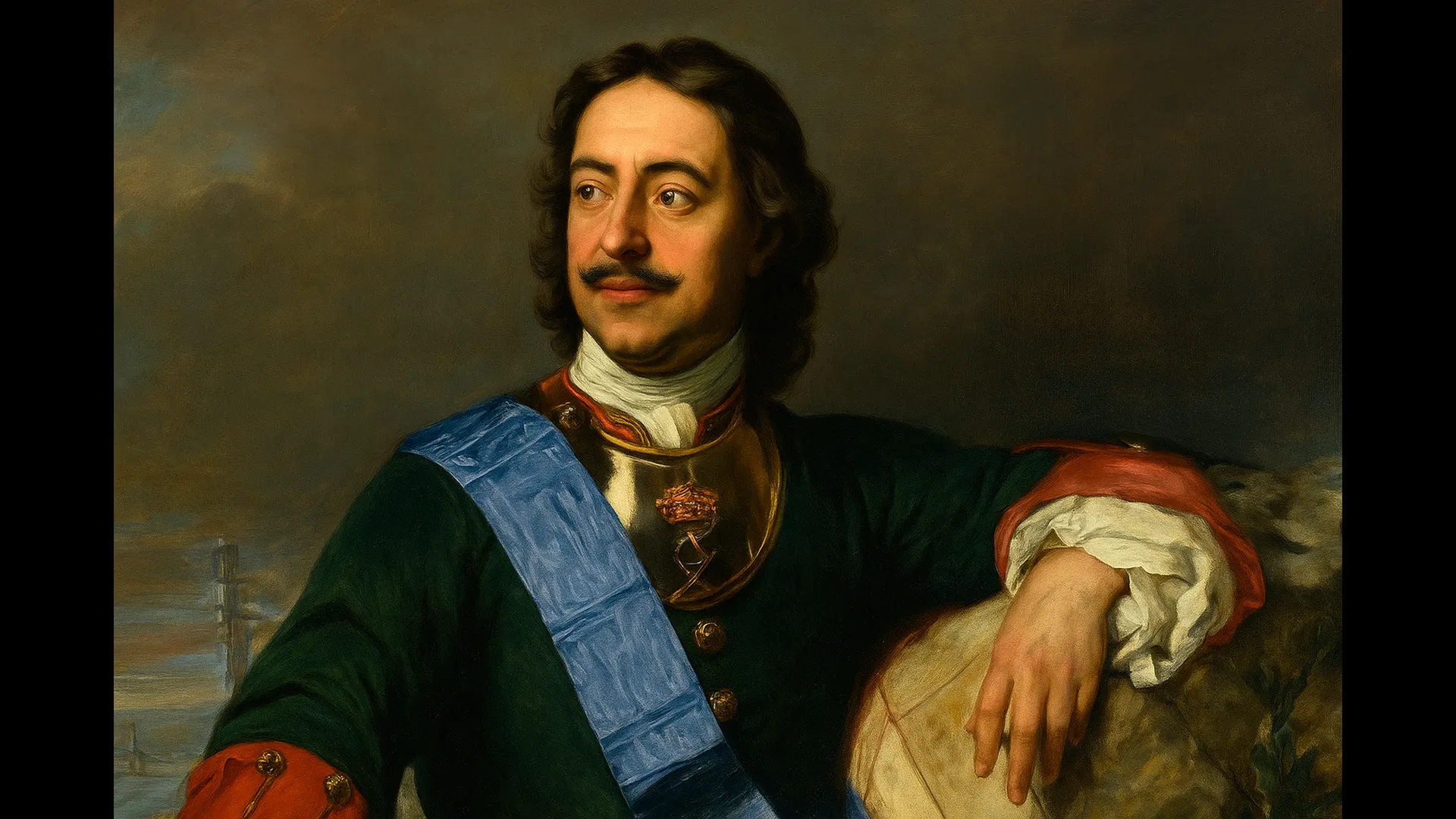
When Peter I ascended the Russian throne, the country was still a sleeping giant: vast, rich in resources, yet bound by feudal traditions and frozen geography. Under his rule, Russia awakened with colossal force. It modernized, expanded, and entered European history through the front door.
Peter the Great was not merely an ambitious monarch. He was a relentless reformer, a tireless traveler, and a ruler who transformed an entire nation—though not without bloodshed. Under his scepter, Russia stopped looking solely to Byzantium and began facing Europe head-on.
Childhood Amid Intrigue and Upheaval (1672–1689)
Peter was born on June 9, 1672, in Moscow, the son of Tsar Alexis I and his second wife, Natalia Naryshkina. From a young age, his life was shaped by the rivalry between two powerful families: the Miloslavskys (related to the first tsarina) and the Naryshkins (his mother’s kin).
In 1682, after the death of Tsar Fyodor III, a bloody revolt by the Streltsy (elite guards) broke out, orchestrated by Peter’s half-sister Sophia, who seized power as regent. Peter, just ten years old, was declared co-tsar with his half-brother Ivan V, though Sophia ruled in their name.
During this time, Peter lived away from real power, retreating to the countryside, where he immersed himself in carpentry, artillery, and military games. This mix of political exclusion and hands-on curiosity would define his character forever.
Rise to Power and Journey to Europe (1689–1698)
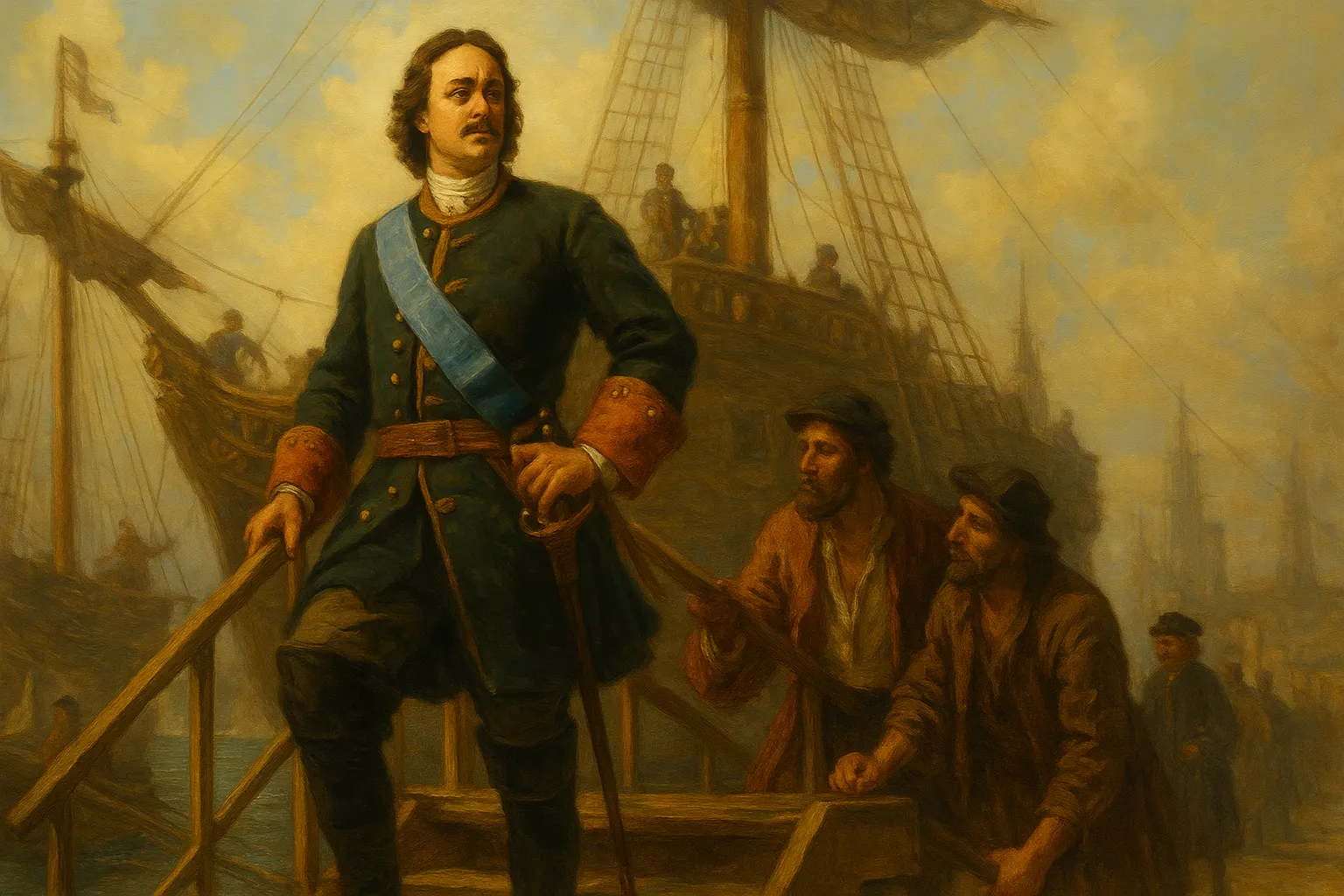
In 1689, supported by the Naryshkins and the Orthodox Church, Peter overthrew Sophia and assumed power, though Ivan V remained co-tsar until his death in 1696.
That same year, Peter initiated his first major project: creating a navy on the Sea of Azov to challenge the Ottomans. But he soon realized Russia lacked the technical know-how. To fill the gap, he launched the unprecedented Grand Embassy to Western Europe.
Peter traveled incognito through Europe (1697–1698), especially in the Netherlands and England. He visited shipyards, observatories, universities, and arsenals. He met scientists, engineers, philosophers, and rulers. It was a formative experience that confirmed his vision: Russia must modernize—at any cost.
Reshaping the Empire
Upon returning to Russia, Peter launched sweeping military, administrative, cultural, and social reforms:
Military Modernization
- Built a modern navy and overhauled the army.
- Replaced the feudal levy system with a centralized, hierarchical military.
State Reorganization
- Diminished the power of the boyars (traditional nobility).
- Established colleges (ministries) and the Governing Senate.
- Created a merit-based civil service ranking system (Table of Ranks).
Education and Science
- Founded the Academy of Sciences.
- Opened schools for engineering, navigation, medicine, and military arts.
- Encouraged foreign language learning.
Cultural Transformation
- Mandated Western-style clothing for the court.
- Ordered men to shave their beards, clashing with Orthodox tradition.
- Replaced the Byzantine calendar with the Julian calendar.
These radical reforms met with fierce resistance. Many Russians saw Peter as a despot who betrayed national identity. But he was unyielding: he crushed the Streltsy and any opposition with ruthless efficiency.
Forging an Empire (1700–1721)
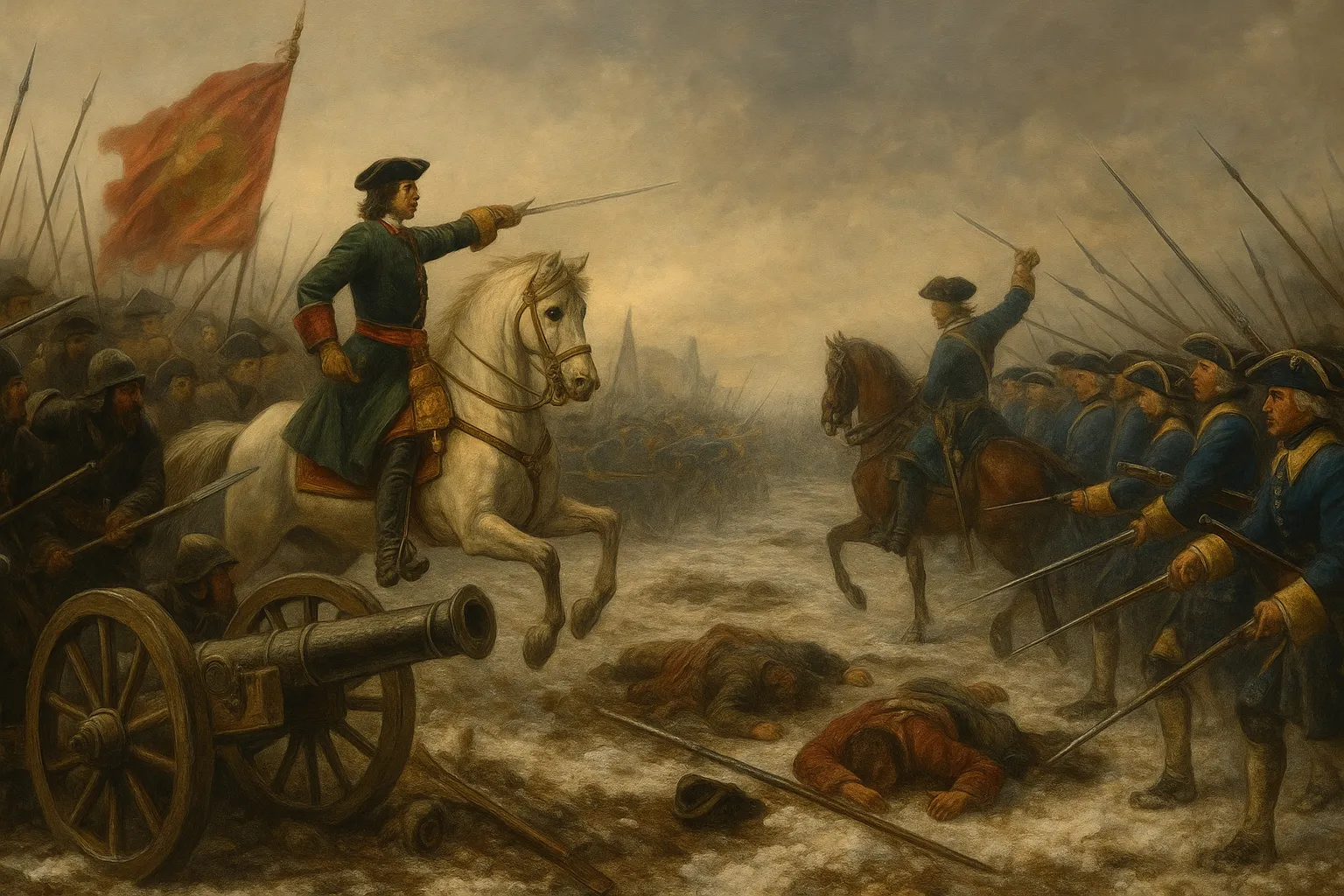
Peter needed access to the Baltic Sea to complete his vision of a European Russia. This led to the Great Northern War (1700–1721) against Sweden, then ruled by the brilliant young king Charles XII.
The war was long and brutal. Peter suffered early defeats like the Battle of Narva, but adapted quickly. The turning point came with the Battle of Poltava (1709), a decisive Russian victory.
The war ended with the Treaty of Nystad (1721). Russia gained vital Baltic territories, and Peter was officially proclaimed “Emperor of All the Russias.” Russia had evolved from an Eastern tsardom into a European empire.
A City Against Time
To symbolize this new Russia, Peter founded a city in 1703 on the marshy banks of the Neva River: Saint Petersburg. Named after Saint Peter (not himself, though the parallel is striking), the city was designed to be a “window to Europe.”
Built by thousands of laborers, soldiers, and serfs in harsh conditions, Saint Petersburg rose from swamps into a dazzling European-style city. Western architects created its palaces, fortresses, and avenues in Baroque style.
In 1712, Peter moved the capital from Moscow. Saint Petersburg embodied his dream: a modern, powerful, European Russia. Yet many saw it as artificial, imposed by force on unforgiving land.
The Man Behind the Crown: Paradoxes of a Giant
Peter was a man of extremes. He adored science but resorted to torture. He admired Western freedom but ruled with an iron fist. He was curious, passionate, pragmatic—and ruthless.
His personality was volcanic. He drank heavily, joined in crude jokes, and founded a “mock synod” that parodied the Church. Yet he also rose early, worked tirelessly, and drafted laws himself.
His personal life was just as turbulent. He divorced his first wife, Eudoxia Lopukhina, and imprisoned his son, Tsarevich Alexei, for suspected treason. Alexei later died in prison after being tortured—an act that haunted Peter to the end.
In 1712, Peter married Catherine I, a woman of humble origins who stood by him and would briefly rule after his death.
Death and Legacy (1725)
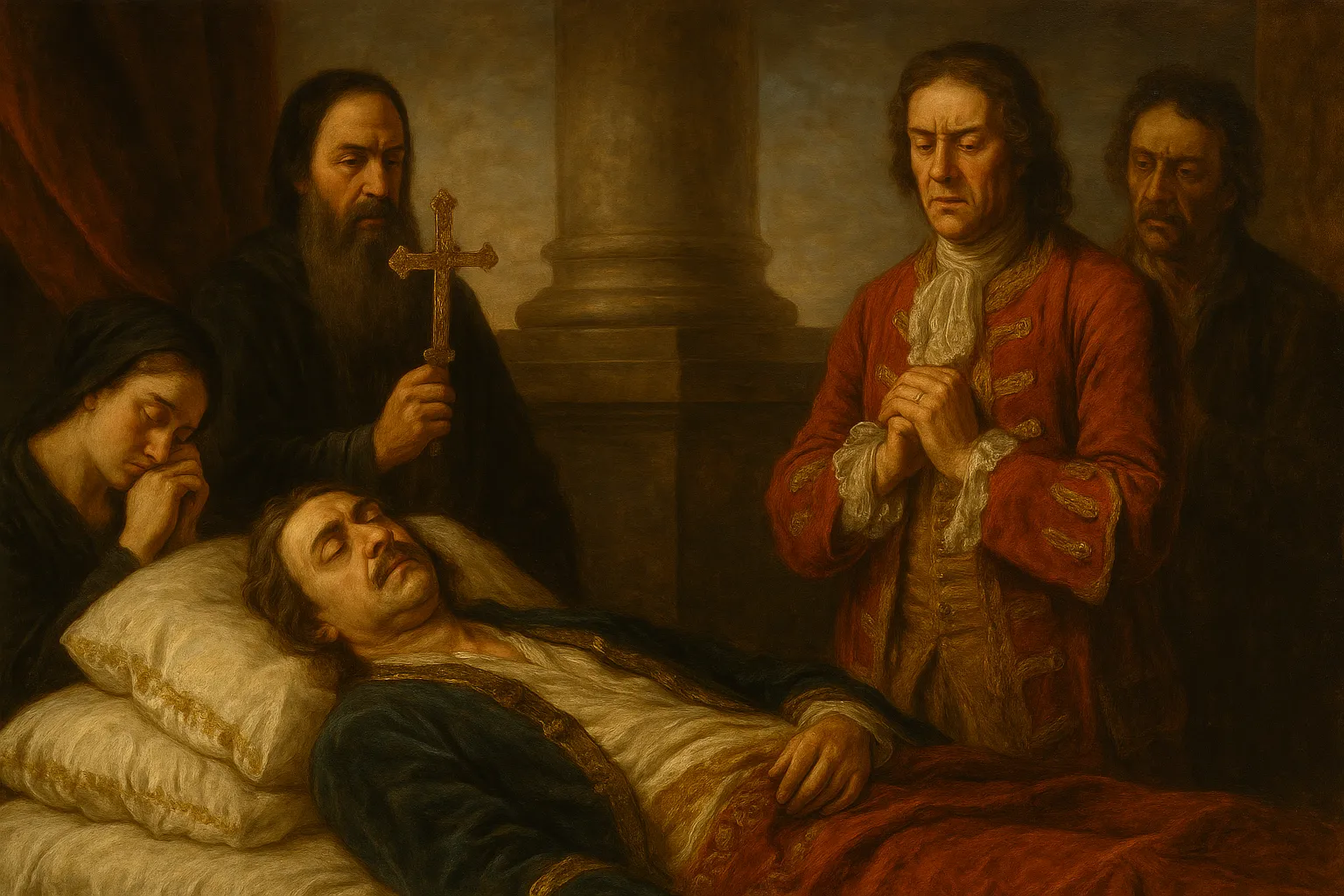
Peter died on February 8, 1725, after a long illness. He left no clear successor, triggering a power struggle. Yet his legacy was unquestionable:
- Transformed Russia into a European imperial power.
- Laid the foundations of the modern Russian state.
- Promoted science, diplomacy, industry, and culture.
- Founded a capital that still defines Russia’s European identity.
Historians have portrayed Peter variously as a civilizing hero, a cruel autocrat, and a visionary. But all agree that his reign marked a watershed moment in Russian and European history.
Quotes and Curiosities
- 🛠 “A state without education is like a body without a soul,” Peter once said.
- 🧪 He personally took part in surgeries and dissections.
- ⛵ He built Russia’s first navy ship with his own hands.
- 🎭 He introduced theater and opera into court life.
- 🏙 Saint Petersburg was dubbed “the most European city outside Europe.”
The Tsar Who Dreamed of the Future
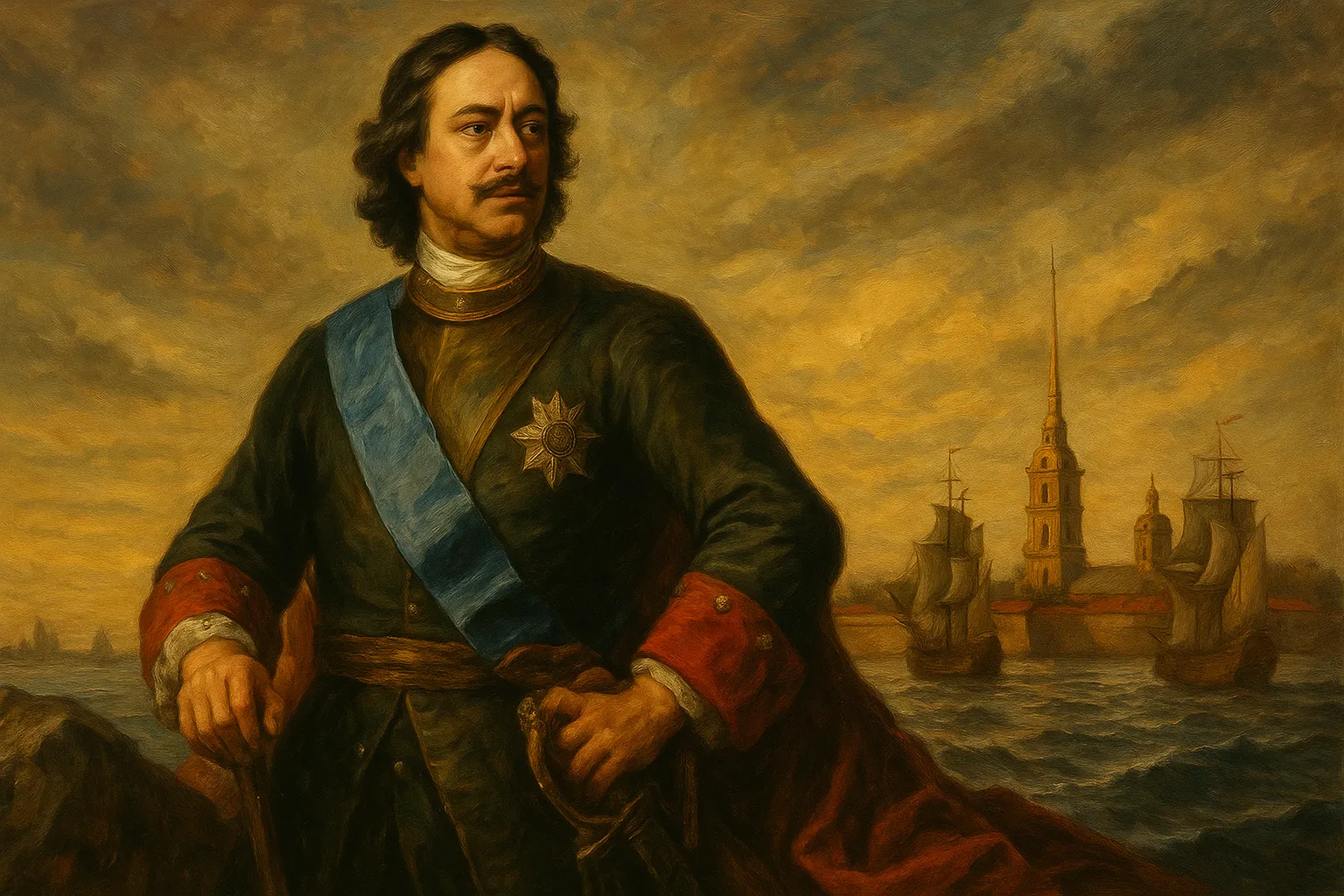
Peter the Great was more than a tsar—he was a builder of time, a shaper of destiny. With vision, violence, and resolve, he transformed Russia’s face. He made it look forward—to Europe, to modernity, to possibility.
His legacy lives not only in Saint Petersburg’s palaces but in the very structure of the Russian state. In a world still torn between tradition and progress, Peter I embodies the eternal tension between the past that defines us and the future that awaits.

